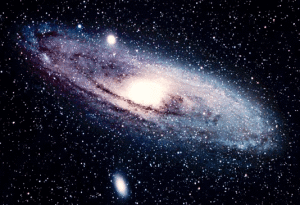The full Hunter’s Moon is waning and the night sky will be revealing more of her secrets till we spin around and catch December’s Long Night Moon. Around the world it’s getting harder and harder to see those dark sky secrets because of the pernicious and seemingly ever-growing light pollution. For my take on light pollution – “I have seen the light and I don’t like it. I have seen the light emanating from strip malls; from sports stadiums; from urban skylines; from cul-de-sacs; from factories; from almost any place twilight finds Homo sapiens and I don’t like it. I don’t like it because I can’t see the stars; I can’t touch the heavens; I can’t revel in the firmament of dying and exploding suns; I can’t see the stuff I’m made of.” – please see – http://www.smokymountainnews.com/component/k2/item/10004-i-have-seen-the-light.
One of the cool things about living in Western North Carolina is that one can still find dark places where they can peek at the sky. The November heavens have lots to look at and as we turn our backs on the Hunter’s Moon they become more and more obvious. In the pre-dawn sky by tomorrow – Nov. 13 – Jupiter will be visible along with the disappearing last-quarter moon. And Mars will be visible in the early evening in Sagittarius by Nov. 15.
The dark skies should provide a great backdrop as Leo begins to hurl firebombs across the heavens. The Leonids – pixie dust from Comet Temple-Tuttle – streak through the night skies, often just before dawn every November and it looks like the peak this year will be between Nov. 16 and Nov. 18.
And if you want to impress someone with your visual acuity tell him or her you can see for 2 million light years. That’s about how far away our neighboring galaxy (Andromeda “M31”) is. And Andromeda will be visible with the naked eye on these dark November nights, especially between the new moon on Nov. 22 and the first quarter on Nov. 29. Binoculars should really make Andromeda pop during these dark nights.
If you don’t have a cell phone or ipad, etc., with a “night sky” app it may take a little celestial knowledge and/or a sky chart to find Andromeda. Find the North Star and look up and a little to the right – you should be able to pick out the “W” or “M” shaped constellation Cassiopeia – a little to the left and up from Cassiopeia you should be able to pick out the “Great Square of Pegasus.” Andromeda will be a fuzzy bright haze (to the naked eye,) just a little higher and to the left of the left, top star of the Great Square of Pegasus. With binoculars, you should be able to see some of the individual stars of Andromeda.
Many of these objects in the November sky will be pointed out by staff and volunteers at UNCA’s brand new Lookout Observatory at their inaugural public viewing program Friday, Nov. 14. It looks like this first program may be booked solid but to learn about the observatory and how to reserve a spot for future programs go to https://lookoutobservatory.unca.edu/.

